New Zealand, with its diverse landscapes ranging from golden beaches to snow-capped mountains, offers some of the world’s most breathtaking hikes. The country’s distinct seasons each bring unique conditions and beauty, making hiking a year-round activity. Here’s your seasonal guide to the best trails, ensuring you hit the path when nature is at its finest.
Places To Hike In New Zealand
Summer (December – February)
Summer in New Zealand is the peak time for hiking, with long daylight hours and generally stable weather conditions.
- Abel Tasman Coast Track: Perfect for summer, this coastal hike in the South Island offers sunny skies, warm temperatures, and golden beaches that are ideal for swimming. The trail can be accessed easily, and there are multiple campsites and huts along the way for overnight stays.
- Tongariro Alpine Crossing: Known as one of the best day hikes in the world, summer offers clear skies and safer conditions to explore the volcanic landscapes and emerald lakes. Early start is advised to avoid the midday heat and crowds.
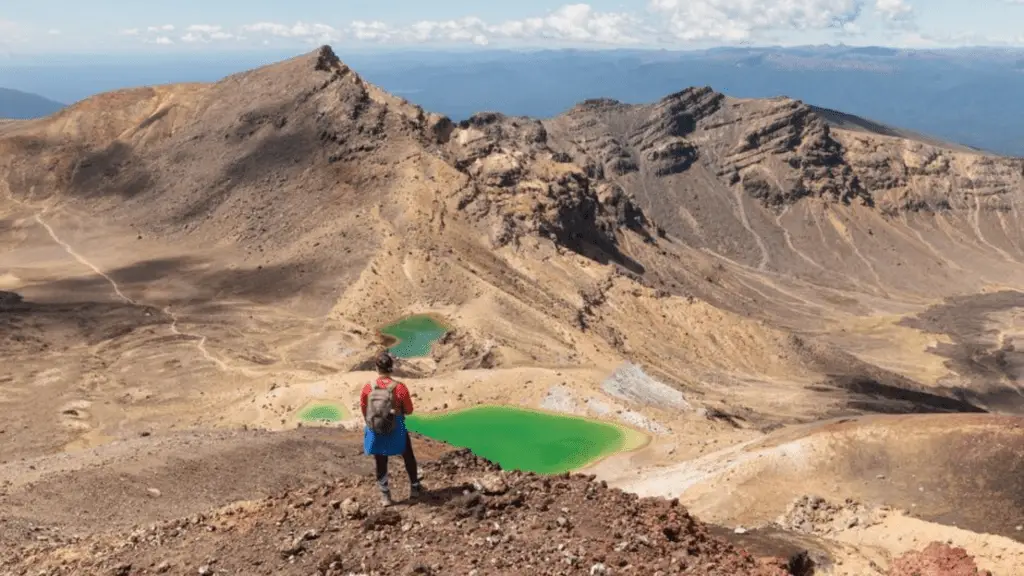
Autumn (March-May)
Autumn brings cooler temperatures and changing foliage, providing a colorful backdrop for hiking adventures.
- Routeburn Track: As the temperatures cool, this track becomes a haven for those looking to enjoy the crisp air and vibrant autumn colors. Linking Fiordland and Mount Aspiring national parks, the Routeburn Track offers majestic alpine views and lush forests.
- Lake Waikaremoana Great Walk: Located in Te Urewera, this hike surrounds a beautiful lake and goes through the remote rainforest, showcasing stunning autumn colors, especially in late April and early May.
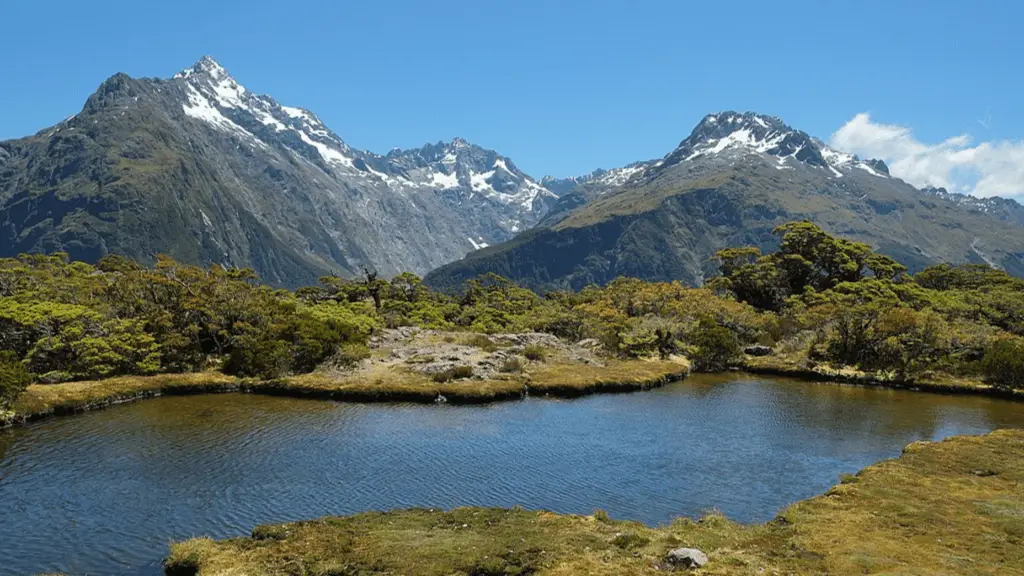
Winter (June – August)
Winter in New Zealand transforms the landscape into a snowy paradise, ideal for those prepared for colder conditions.
- Tongariro Northern Circuit: While more challenging in winter, this hike offers a unique experience with snow-covered landscapes. Proper gear and possibly a guide are required due to snow and ice.
- Queenstown Hill Time Walk: For a less demanding winter hike, this trail offers stunning views over Queenstown, Lake Wakatipu, and the surrounding mountains, often capped with snow. The walk is accessible and can be completed in a few hours.
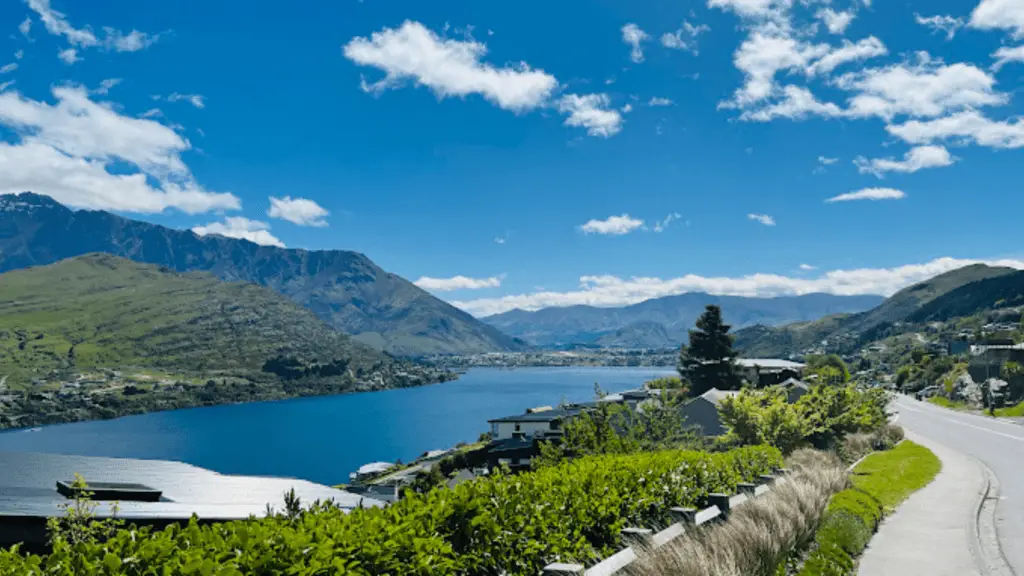
Spring (September – November)
Spring sees the country bloom with flowers and wildlife, making it a fantastic season for hiking as the landscapes come to life.
- Roy’s Peak, Wanaka: Offering one of the most photographed views in New Zealand, spring at Roy’s Peak is less crowded, and the track is surrounded by blooming wildflowers, making the challenging hike worth the effort.
- Whanganui Journey: Though technically a paddle rather than a hike, spring is the perfect time to experience this great walk’s lush greenery and active wildlife along the Whanganui River.
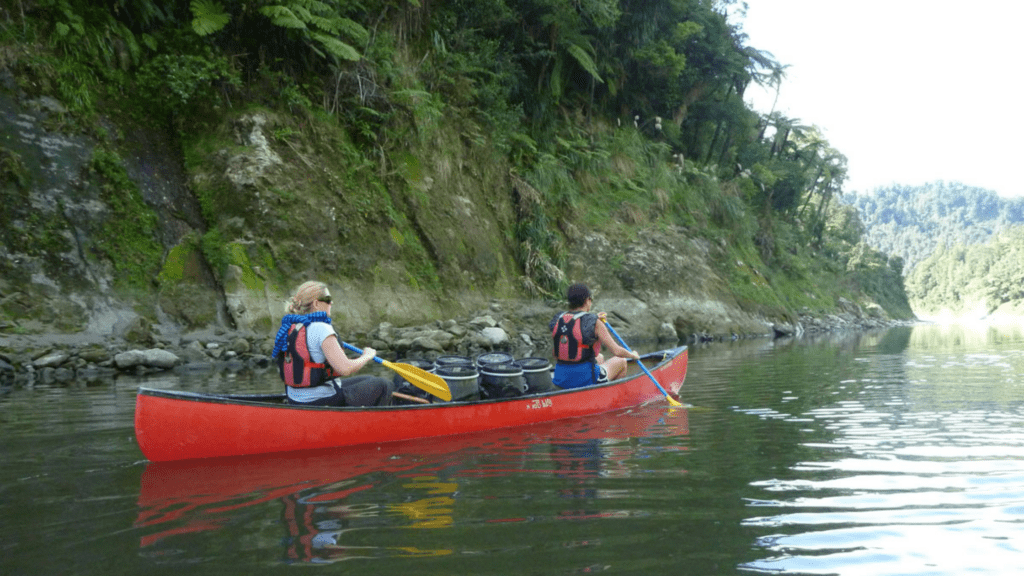
Tips for Seasonal Hiking
- Always Check the Weather: New Zealand’s weather can be unpredictable. Always check the forecast and prepare accordingly.
- Book in Advance: For popular tracks, especially in summer, book your huts and campsites well in advance.
- Respect the Environment: Stick to the trails, carry out what you carry in, and be mindful of your impact on the natural beauty.
- Safety First: Especially in winter, ensure you have the correct gear and experience. Consider hiring a guide for alpine crossings or when snow is present.
Gear and Preparation
No matter the season, being well-prepared is key to a successful hiking trip in New Zealand.
- Summer: Lightweight clothing, sun protection (hat, sunscreen), and plenty of water are essentials due to the stronger UV rays in this part of the world. Also, insect repellent can be handy against sandflies, especially in coastal and forest areas.
- Autumn: Layered clothing will serve you well as temperatures can fluctuate. Waterproof gear is also recommended as the season can bring rain. This time of year can offer some of the most stable weather conditions, making it ideal for longer multi-day hikes.
- Winter: Essential gear includes thermal layers, a high-quality insulated jacket, waterproof outer layers, and possibly snowshoes or crampons for higher elevation hikes. Always check if a trail is suitable for winter hiking, as some may be closed due to snow and avalanche risk.
- Spring: Similar to autumn, layered clothing works best. Be prepared for sudden weather changes – spring can bring rain, wind, and occasionally snow in higher altitudes. Waterproof hiking boots are a must, as trails can be muddy.

Maori Culture
Many of New Zealand’s trails pass through areas of significant cultural importance to Maori. Engaging respectfully with these places can enrich your hiking experience.
- Learn Before You Go: Understanding the cultural significance of the land you’re exploring adds a rich layer of meaning to your hike. Many places have Maori names that tell a story about the landscape.
- Respect the Land: The Maori concept of “kaitiakitanga” speaks to guardianship and protection of the environment. Follow local guidelines, respect sacred sites, and leave no trace.

Wildlife Encounters
New Zealand’s trails offer opportunities to encounter unique wildlife, some of which are endemic to the country.
- Birdlife: New Zealand is home to numerous bird species, many of which are not found anywhere else in the world. The dawn chorus of birdsong is an unforgettable part of hiking in New Zealand, particularly in forested areas.
- Marine Life: Coastal hikes, like those in Abel Tasman National Park, can provide encounters with marine life such as seals, dolphins, and even whales.
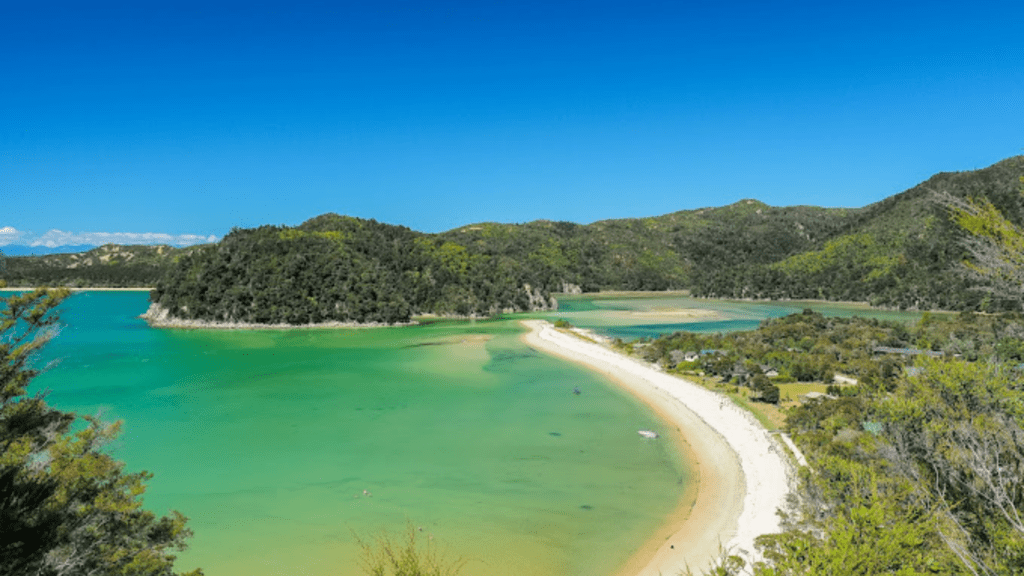
Making the Most of Your Hike
Beyond the physical preparation and understanding the seasonal nuances, immersing yourself fully in the experience will make your hike unforgettable.
- Take Your Time: Allow yourself to fully engage with the environment, whether it’s pausing to take in a view, listening to the sounds of nature, or simply breathing in the fresh air.
- Journaling and Photography: Documenting your journey, whether through writing or photography, can help capture the memories and landscapes you encounter.
- Connect with Fellow Hikers: The hiking community in New Zealand is welcoming. Sharing stories and tips with fellow hikers can add to your experience.
Accommodation Options
I’ll outline a variety of accommodation types near popular hiking destinations in New Zealand, categorized by budget, comfort, and experience.
Near Tongariro Alpine Crossing
- Budget: Whakapapa Holiday Park offers affordable camping options and basic cabins, perfect for those looking to save money and stay close to nature.
- Mid-Range: The Park Hotel Ruapehu provides comfortable yet reasonably priced rooms, a great middle-ground for hikers.
- Luxury: Chateau Tongariro Hotel offers a more luxurious stay, with stunning views and spa facilities to relax after a hike.
Close to Abel Tasman Coast Track
- Budget: Kaiteriteri Reserve Campsite is an ideal choice for budget travelers, offering basic facilities in a location with easy access to the start of the trail.
- Mid-Range: Abel Tasman Marahau Lodge offers comfortable, self-contained units, giving hikers a cozy place to rest.
- Luxury: Split Apple Retreat is an exclusive luxury option, providing wellness and gourmet experiences along with stunning views of the Abel Tasman National Park.
Around Milford Track
- Budget: Te Anau Lakeview Kiwi Holiday Park & Motels provides affordable accommodation options with stunning lake views, a perfect base before and after hiking the Milford Track.
- Mid-Range: Milford Sound Lodge, although a bit of a drive from the track’s start, offers comfortable chalets and rooms in one of New Zealand’s most breathtaking settings.
- Luxury: Fiordland Lodge offers luxury in the heart of Fiordland National Park, with incredible views and fine dining, ensuring a relaxing and pampering stay.
Near Routeburn Track
- Budget: Kinloch Lodge (YHA Kinloch, Glenorchy) is a budget-friendly option with dormitory rooms and private cabins, located at the head of Lake Wakatipu, close to the Routeburn Track start.
- Mid-Range: Routeburn Valley Lodge offers a unique wilderness lodge experience with cozy accommodations and the opportunity to relax in a remote setting.
- Luxury: Blanket Bay Luxury Lodge, situated near the southern end of Lake Wakatipu, provides an opulent stay with unmatched scenery and service.
By the Kepler Track
- Budget: Te Anau Lakefront Backpackers is a cost-effective choice for those starting or finishing the Kepler Track, offering dormitory beds and camping sites.
- Mid-Range: Fiordland Lakeview Motel and Apartments offer self-contained units with beautiful lake views, providing comfort and convenience.
- Luxury: The Fiordland Lodge provides a high-end experience with stunning lakefront views and top-notch dining, perfect for unwinding after completing the track.
Here’s the updated list of accommodation options near popular hiking locations in New Zealand, now including phone numbers and websites:
| Hiking Location | Accommodation Name | Type | Features | Phone Number | Website |
|---|---|---|---|---|---|
| Tongariro National Park | Chateau Tongariro Hotel | Hotel | Historic hotel, stunning views | +64 7-892 3809 | https://www.nationalpark.co.nz/ |
| Abel Tasman Coast Track | Awaroa Lodge | Lodge | Access to secluded beaches, eco-friendly | +64 3-528 8758 | www.awaroalodge.co.nz |
| Milford Track | Milford Sound Lodge | Lodge | Close to trail start, scenic location | +64 3-249 8071 | www.milfordlodge.com |
| Routeburn Track | Routeburn Lodge | Lodge | Comfortable, convenient to track | Information Not Available | Information Not Available |
| Kepler Track | Te Anau Lakeview Kiwi Holiday Park & Motels | Holiday Park | Lakefront views, variety of accommodations | +64 3-249 7457 | www.teanauholidaypark.co.nz |
| Mount Cook National Park | The Hermitage Hotel | Hotel | Panoramic mountain views, luxury amenities | +64 3-435 1809 | www.hermitage.co.nz |
Conclusion
New Zealand’s trails are more than just pathways through the landscape; they are journeys through a land of natural wonders and cultural richness. Whether you’re trekking through the snow-capped peaks in winter, wandering among the blooming wildflowers of spring, exploring the vibrant forests of autumn, or enjoying the sun-kissed beaches of summer, New Zealand offers a hiking experience for every season, each with its unique beauty and challenges. Remember, the journey is as important as the destination, so embrace every moment on these paths less traveled.


